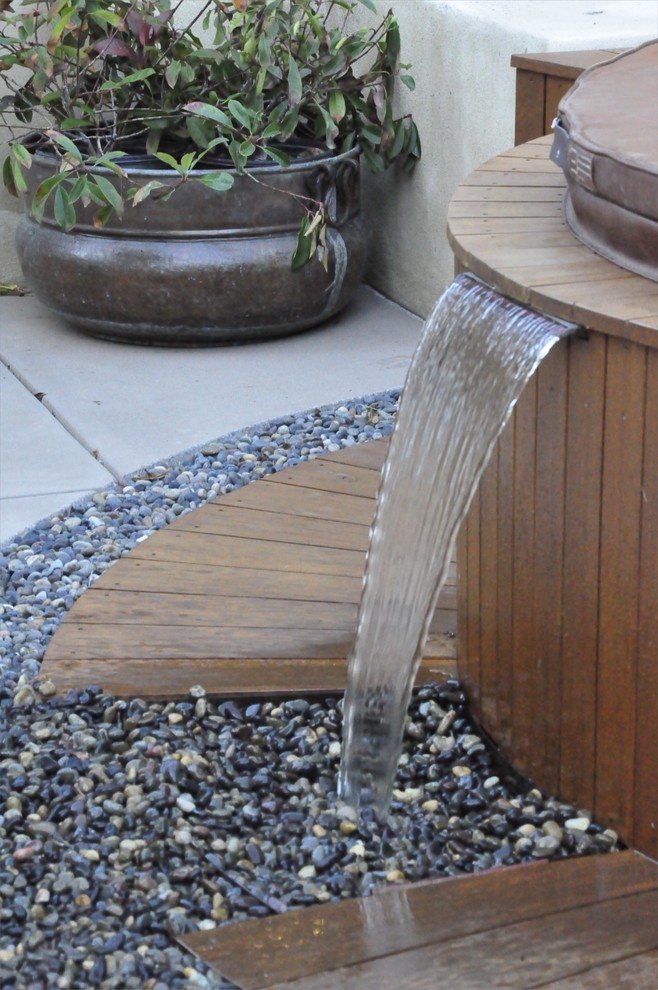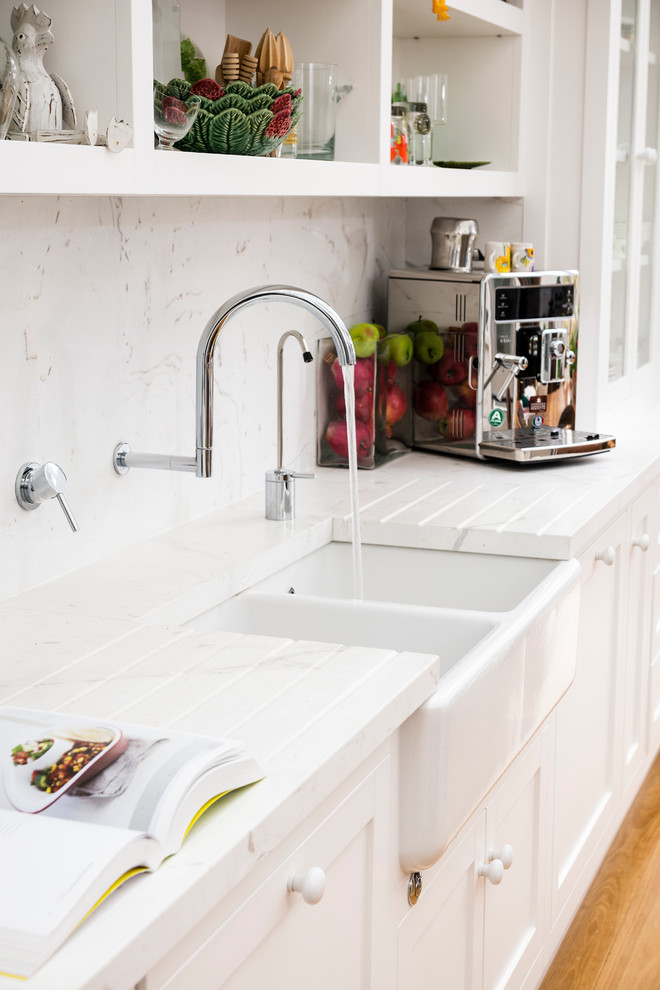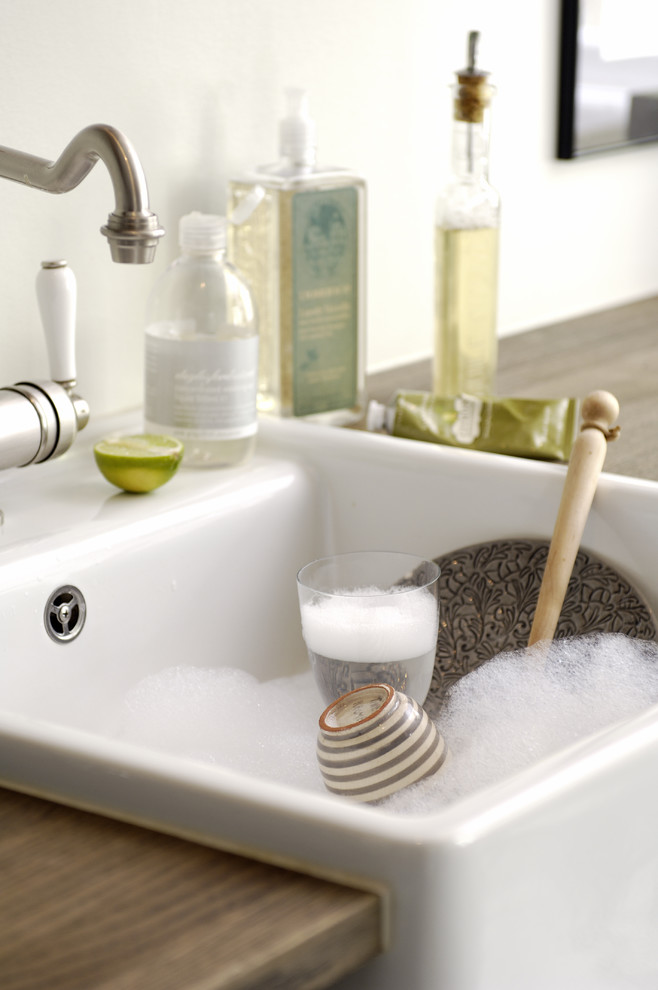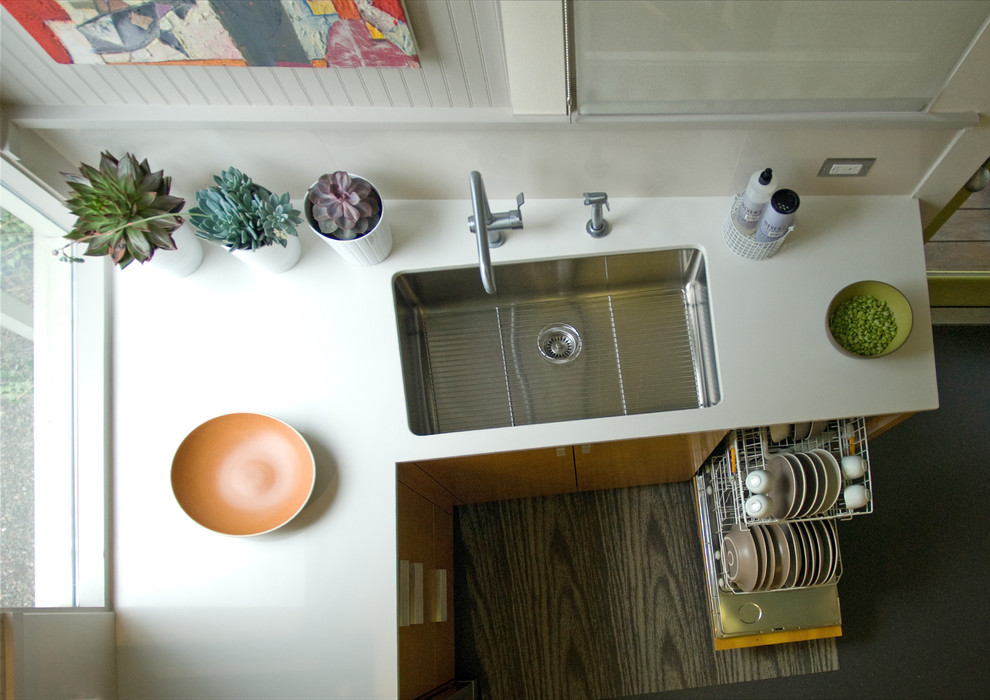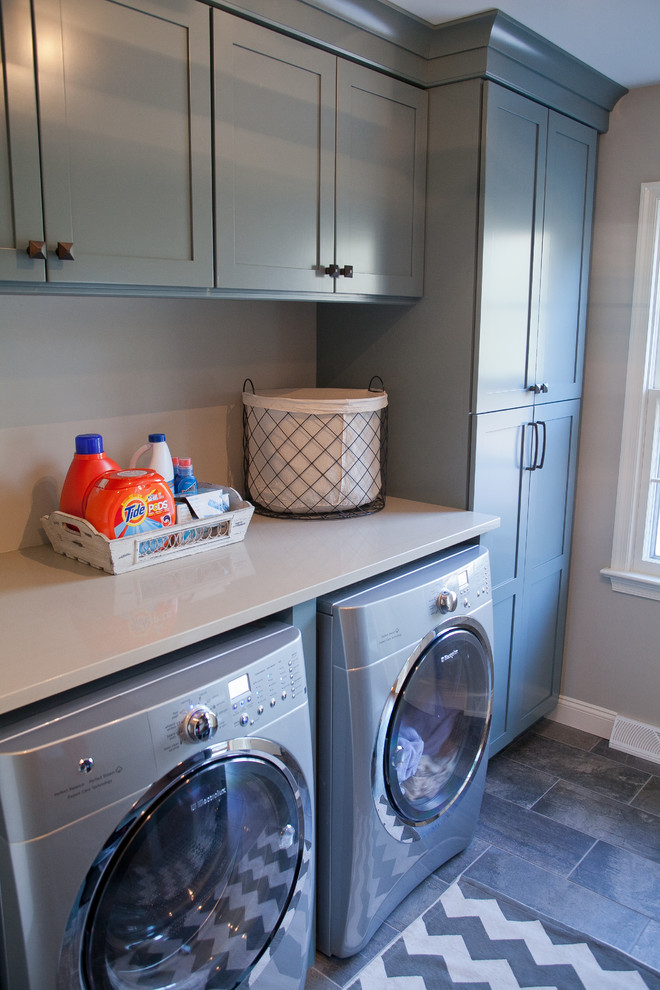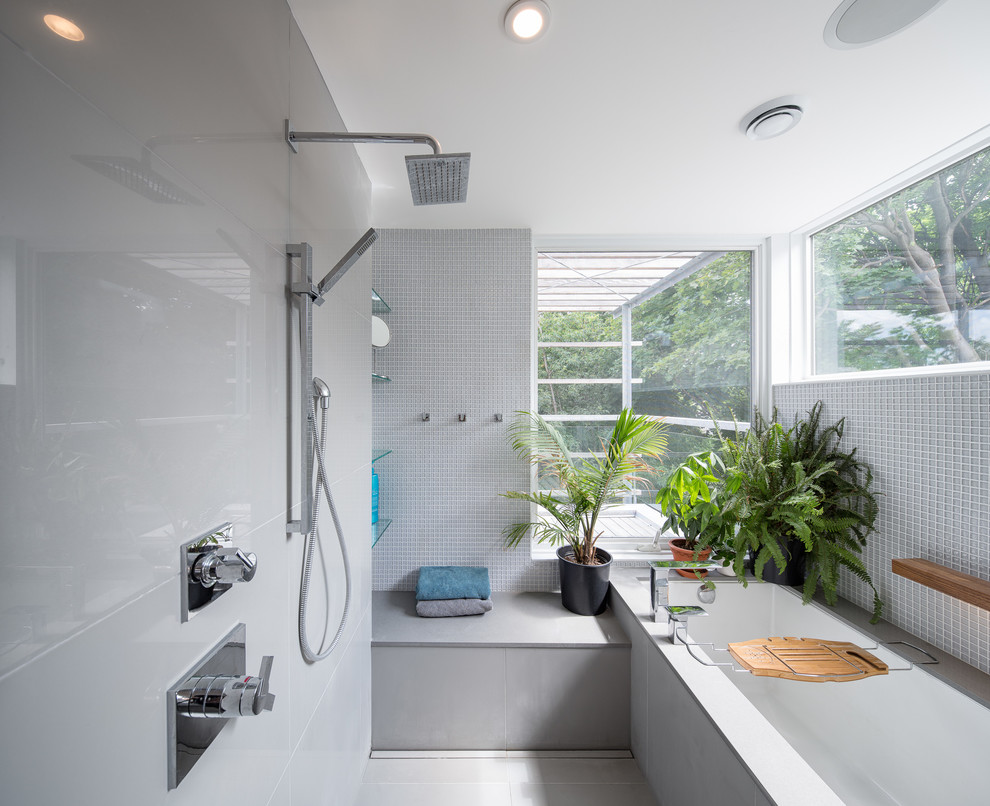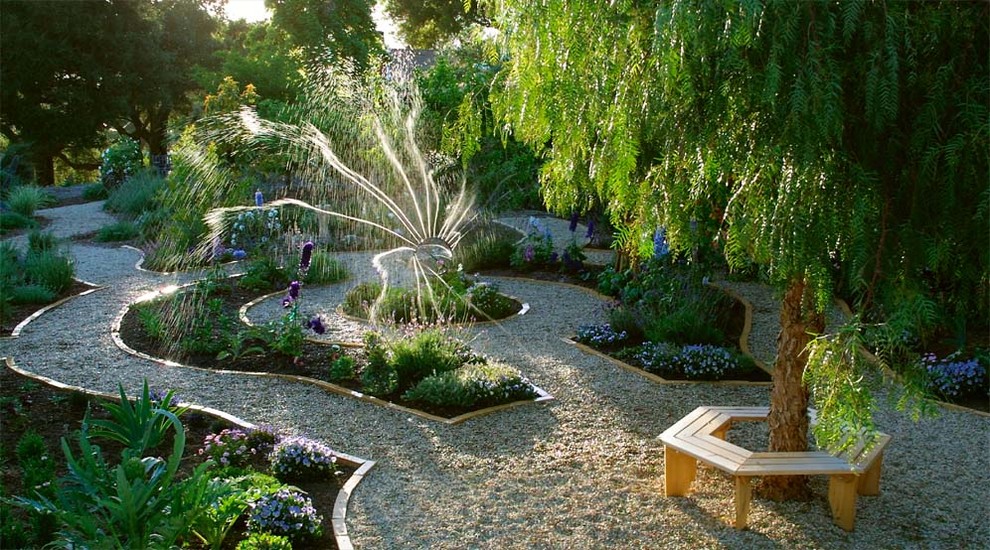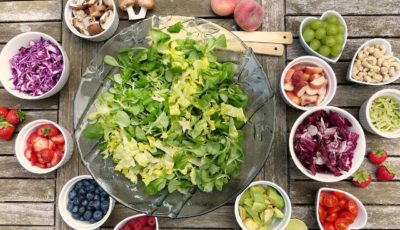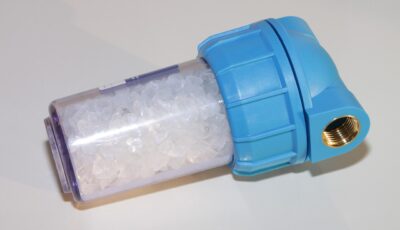A Practical Guide to Saving Water at Home
Right now, the flow of water from one of the taps in your home may be strong, but like all of Mother Earth’s resources, water can run out as it is a finite resource. By not being mindful of how this precious liquid is used on a daily basis, present and future human beings may suffer from consequences brought about by the lack of clean and safe water to use.
There are so many ways you can help save the world’s finite supply of this precious resource. The ones you should keep in mind are highlighted below.
Photo by Jeffrey Gordon Smith Landscape Architecture
Kitchen
- Remind your household to contribute to saving this resource using sticky notes posted on the sink.
- Avoid rinsing food scraps down the sink drain. Toss them down the garbage pail instead. A blocked drain will force you to use more water to push oil and sauces down the drain pipe.
- Lukewarm water is more than enough to clean dishes.
Photo by Steding Interiors & Joinery
- While you wait for your dishwasher to warm up, you may use the cold stream for other important things, like filling up the cat’s or dog’s water bowl, filling ice cube trays, and filling up reusable bottles you keep inside the fridge.
- Contact a plumber to fix that leaky kitchen tap (and other leaks in other parts of the house). Keep in mind that even the tiniest leak can waste hundreds of litres of water each year.
Photo by Christine F. Interiordesign AS
- Water-conserving toilets, washing machines, and dishwashers are a great investment, but if they’re not part of your budget as of this time, you can go with efficient shower heads and tap aerators instead.
- The dishwasher is most efficient when at full load. However, a few models have a half-load option, a helpful option in case you don’t cook a lot or are living alone.
Laundry Room
-
- Wash clothes in the washing machine at full load only. But if it’s not possible for you, make the necessary adjustments on your washing machine.
- If your washing machine is ten years old or more, it’s high time to replace it. Old washing machine models are not as water-efficient as the latest models, which feature the latest water-saving technologies.
Bathroom
- Put a refillable water bottle and cup in the bathroom. Use these when it’s time to brush your teeth.
- Do not walk away from the shower while it is still warming up. But if you can’t stand exposure to cold water, you can position a bucket under the shower head to collect cold water that can be used for flushing or watering the plants.
Photo by John Donkin Architect Inc.
- Lessen the time you spend inside the shower.
- Never let the water run whilst you are shaving.
Photo by ART Design Build
In The Yard
- Get in touch with a gardening professional about aerating the lawn. This process involves punching holes through the soil below.
- Use water-efficient sprinkler heads.
Photo by Margie Grace – Grace Design Associates
- Adjust the sprinkler so it only hits the lawn.
- Use a broom in place of water flowing from a hose when sweeping the sidewalk.
- If you do not have a sprinkler, or if it’s hard for you to clean up the sidewalk without water, you can set up rain water tanks direct to a part of your property near the garden or sidewalk for hassle-free use of the rainwater stored in the tank. Make sure to check national, state, and local laws before setting up a rainwater catchment or harvesting system to avoid heavy fines and, possibly, imprisonment.
Most of the tips mentioned above may just be small ways to save on the aforementioned resource. But because they allow you to save several hundred litres of water each month or year, make sure to inform and encourage your household to do them whenever they can.

